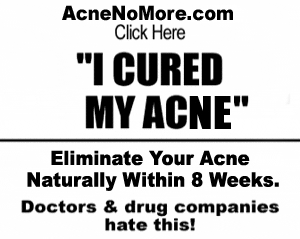Acne vulgaris: Understanding the Inflammatory Skin Condition
Acne vulgaris, commonly known as acne, is an inflammatory skin disease
caused by changes in the pilosebaceous units. These units consist of hair
follicles and their associated sebaceous glands. Acne is characterized by
the presence of various skin lesions, often referred to as pimples, spots,
or zits.
Understanding the Prevalence and Factors Contributing to Acne
Visit: Treating Acne Safely: A Holistic Approach
Symptoms of Acne: Unveiling the Common Manifestations
Different Types of Acne Lesions and Potential Scarring
Psychological Effects and Impact on Self-esteem
Exploring the Causes of Acne: Unveiling the Factors
1. Hormonal Activity:
Hormonal changes during menstrual cycles and puberty play a significant
role in acne development.
2. Stress:
Increased hormonal output from the adrenal glands due to stress can
contribute to acne formation.
3. Hyperactive Sebaceous Glands:
Overactivity of sebaceous glands, influenced by hormonal sources
mentioned earlier, can lead to acne.
4. Accumulation of Dead Skin Cells:
The buildup of dead skin cells contributes to the obstruction of
follicles.
5. Bacterial Infection:
The body's allergic response to bacteria present in the pores can
exacerbate acne.
6. Skin Irritation and Inflammation:
Any form of skin irritation or scratching can activate inflammation and
worsen acne.
7. Anabolic Steroids:
The use of an abolic steroids has been associated with acne.
8. Certain Medications:
Medications containing halogens (iodides, chlorides, bromides), lithium,
barbiturates, or androgens can contribute to acne formation.
9. Exposure to Chlorine Compounds:
High levels of chlorine compounds, particularly chlorinated dioxins, can
cause severe and long-lasting acne known as Chloracne.
Insights into Hormonal and Follicular Factors
Several hormones, including testosterone, dihydrotestosterone (DHT),
dehydroepiandrosterone sulfate (DHEAS), and insulin-like growth factor 1
(IGF-I), have been associated with acne. Additionally, acne-prone skin has
been found to be insulin resistant.
Acne in Later Years and Misconceptions about Causes
Dispelling Misconceptions: Common Myths about Acne Causes
1. Diet:
While some studies have suggested a link between certain foods like chocolate, french fries, potato chips, and sugar with acne, the scientific literature remains inconclusive. Health professionals generally advise individuals with acne to experiment with their diets and avoid consuming food that seems to worsen their symptoms. One recent study found an association between milk consumption, particularly skimmed milk, and acne in a survey of 47,335 women.
The presence of hormones, such as bovine insulin-like growth factor 1 (IGF-I), in cow milk might explain this association, but further research is required for definitive conclusions. Seafood, on the other hand, may contain higher levels of iodine, but it is unlikely to cause acne outbreaks.
However, individuals prone to acne may consider limiting their
consumption of iodine-rich foods. Some hypotheses propose a link between a
high intake of refined sugars and acne. The absence of acne in
non-westernized societies has been attributed to their low-glycemic diets.
Further research is necessary to determine if reducing the consumption of
high-glycemic foods, such as soft drinks, sweets, and white bread, can
significantly alleviate acne.
2. Personal Hygiene:
Acne is not caused by dirt, contrary to popular belief. This misconception arises due to the involvement of skin infections in acne. In reality, acne lesions form deep within the narrow follicle channels, making it impossible to wash them away.
The blockages are a result of cells and sebum produced by the body. The bacteria implicated in acne are naturally present on the skin. While regular cleansing can help reduce acne for some individuals, overly aggressive cleansing can worsen existing lesions and potentially create new ones by damaging or excessively drying the skin.
3. Sexual Activity:
There is no scientific evidence supporting the claims that celibacy or
masturbation cause acne. Similarly, the notion that sexual intercourse can
cure acne lacks scientific validity. However, it is true that anger and
stress can influence hormone levels and oil production in the body.
Whether stress-induced increases in oil production are sufficient to cause
acne is currently under investigation.






















0 Comments